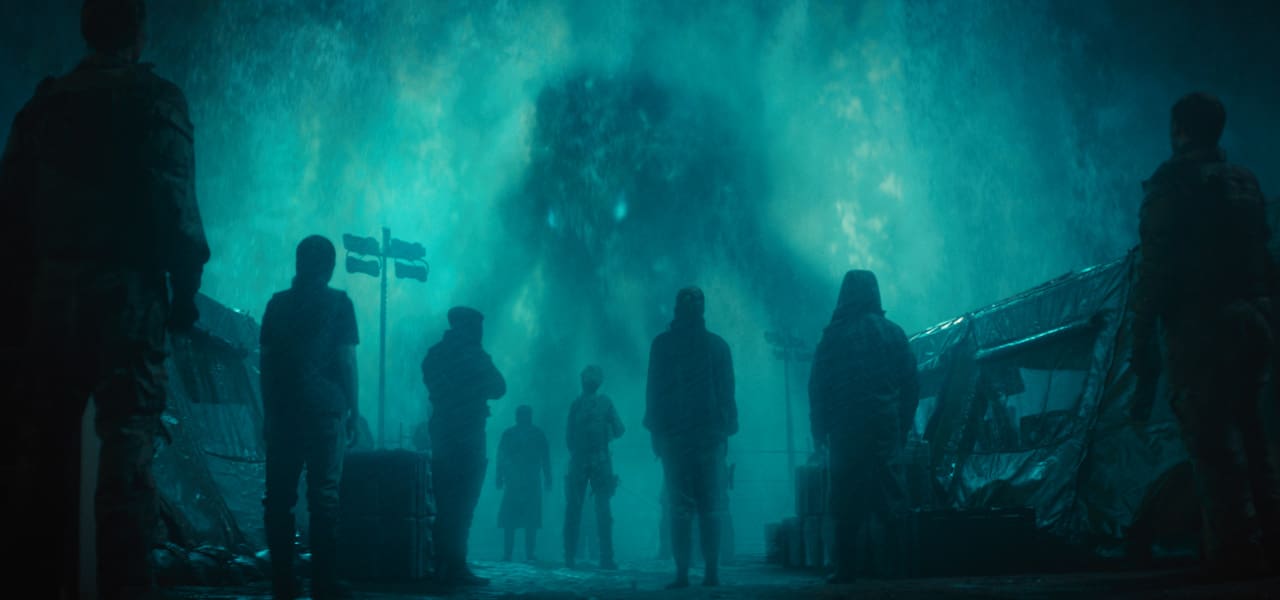
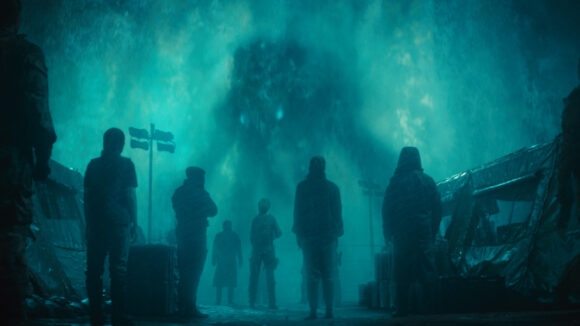
In New ‘Godzilla’ Film, Silhouette is King
There is a ton of articulate character animation for the monsters in director Michael Dougherty’s Godzilla: King of the Monsters, completed by a host of visual effects studios, including MPC, DNEG, Method Studios, and others, with the work overseen by production vfx supervisor Guillaume Rocheron.
Alongside the necessary push to give these monstrous characters the correct scale and the correct weight was an equally large effort to concentrate on the silhouettes of each creature.
Distinctive silhouettes, of course, can help the audience recognize individual creatures immediately, something that was important in King of the Monsters where many new ‘titans’ were introduced during the film.
Dougherty recently told the Los Angeles Times that, “The key to any good creature design is always the silhouette. You should always be able to recognize your creature strictly from the silhouette, without having to rely on any extra details.”
From concepts and into previs and then the final shots, Rocheron also followed that directive to maintain the distinctive silhouettes of the creatures. Indeed, these are often featured in dramatic compositions against equally dramatic skies full of color and atmosphere. A lot tends to be happening in the frame during King of the Monsters – from creatures taking flight, to them fighting each other, and to destruction inflicted upon the human world – but Rocheron always had in the back of his mind that the resulting imagery needed to be easy to read in terms of which creatures were in the shot.
“For that,” he said, “there’s always a test that I use called the ‘thumbnail test.’ This is where you take one of these shots and, instead of looking at it on a giant screen, you make it basically like a small fragment on your computer frame. Say, a 200 pixel wide thumbnail, and you look at it. And if you can tell, ‘Okay, there’s the monster Ghidorah and Godzilla and I understand the composition of the shot, then you pass the thumbnail test, basically.’
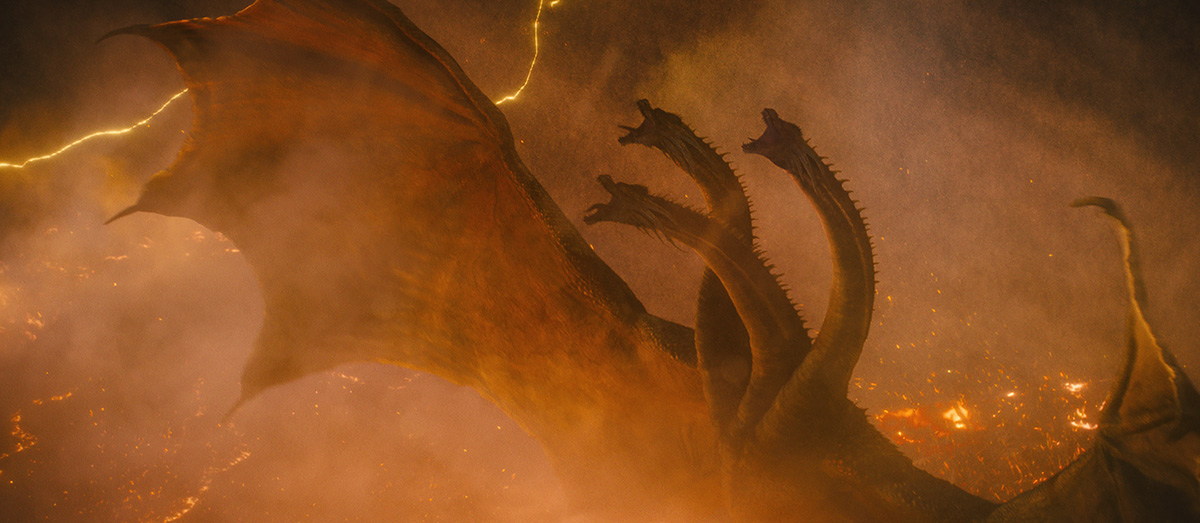
One vfx studio that had to pay particular attention to silhouettes for some of its shots was DNEG. The studio handled, among other things, scenes of the giant moth-like creature Mothra as it unfurls its wings from behind a waterfall. Here, Mothra’s silhouette was crucial.
“I think the movie could have been called ‘Godzilla Silhouette’ because I can’t tell you how many times we had to backlight things with Mothra,” said DNEG visual effects supervisor Brian Connor. “We had to come up with excuses to have light coming through so that we would see their shape or their silhouette.”
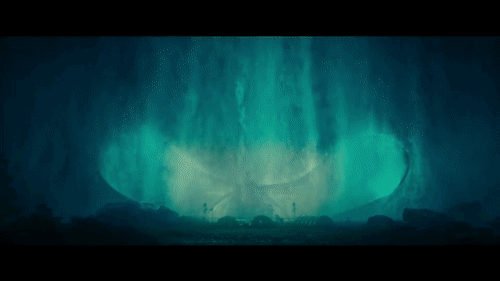
For the waterfall shot, in particular, Mothra has escaped her usual place of hiding and cocooned herself under the falls. Eventually, in a dazzling display of bioluminescence, Mothra spreads her wings from behind the waterfall. “For that shot,” described Connor, “one of the filmmakers’ edicts was, they wanted her to feel bioluminescent behind the waterfall, and you can kind of see her but you can’t see her. It was all about, how much do we feed the bioluminescence transmitting through the waterfall and how much do we see her silhouette moving around?”
To get to that point, DNEG started with the original photography which featured soldiers and a partial set against bluescreen. Blue, glowing lights, rain bars, and fans provided atmosphere and the main plate, into which their cg Mothra (the model was sourced from MPC) and the waterfall (an effects simulation) would be generated.
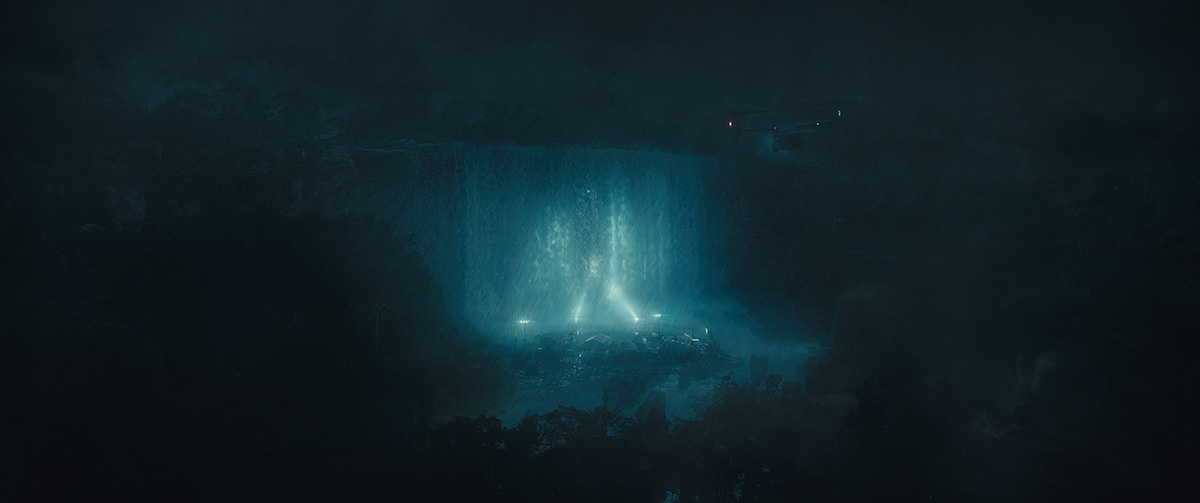
Concept art from production and internally from DNEG established what the final waterfall shots would look like, again keeping the overall silhouette in mind. That included for the moment Mothra slides out from the bottom of her cocoon. “That’s a total cheat, by the way,” admitted Connor. “They don’t usually come off the bottom, they’re kind of vertical when they hatch. So it’s all a cheat, but the director had established that look in previs and it was all about making sure we could understand what was happening.”
The waterfall required several different kinds of effects simulations, including the falling water, the spray and foam. This was achieved in Houdini and Clarisse. Originally, it was only intended for Mothra to be seen behind it, but that requirement changed as the shot progressed. “The brief said she would never be poking out of the waterfall,” said Connor. “And then, of course, they wanted her legs to come out of the waterfall as well. The challenge was that this then involved new kinds of interaction between the falls and Mothra herself. It actually really added to awe of that shot.”
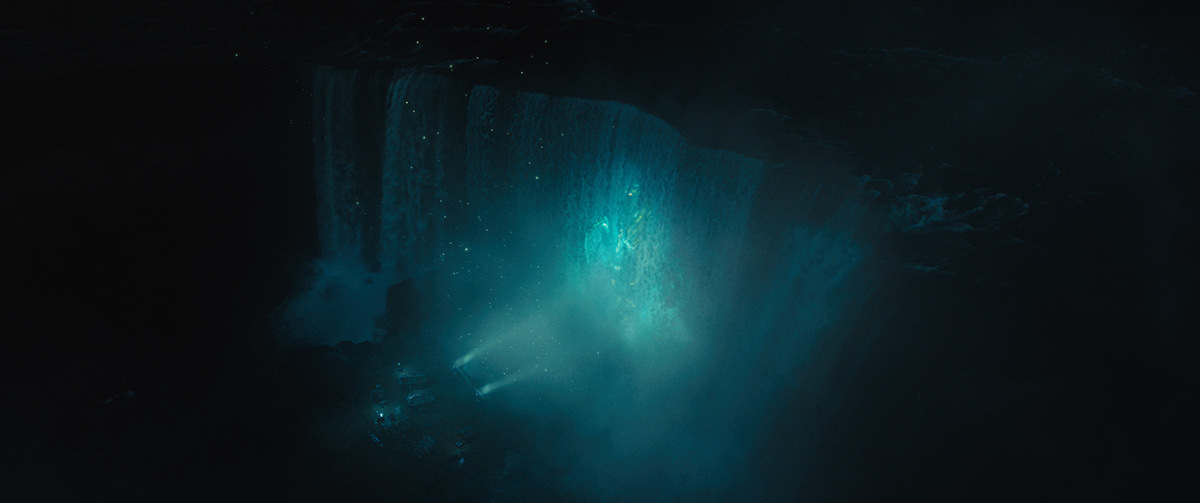
“Because it was a waterfall,” added Connor, “it was just so challenging to get the thickness of the waterfall and then the spray and foam and all the mist moving in the atmosphere. And then when Mothra was ‘bioluminescing’ strongly, that changed everything as well. It just had to be carefully orchestrated to sell the believability of it, and keep that silhouette in play.”

.png)